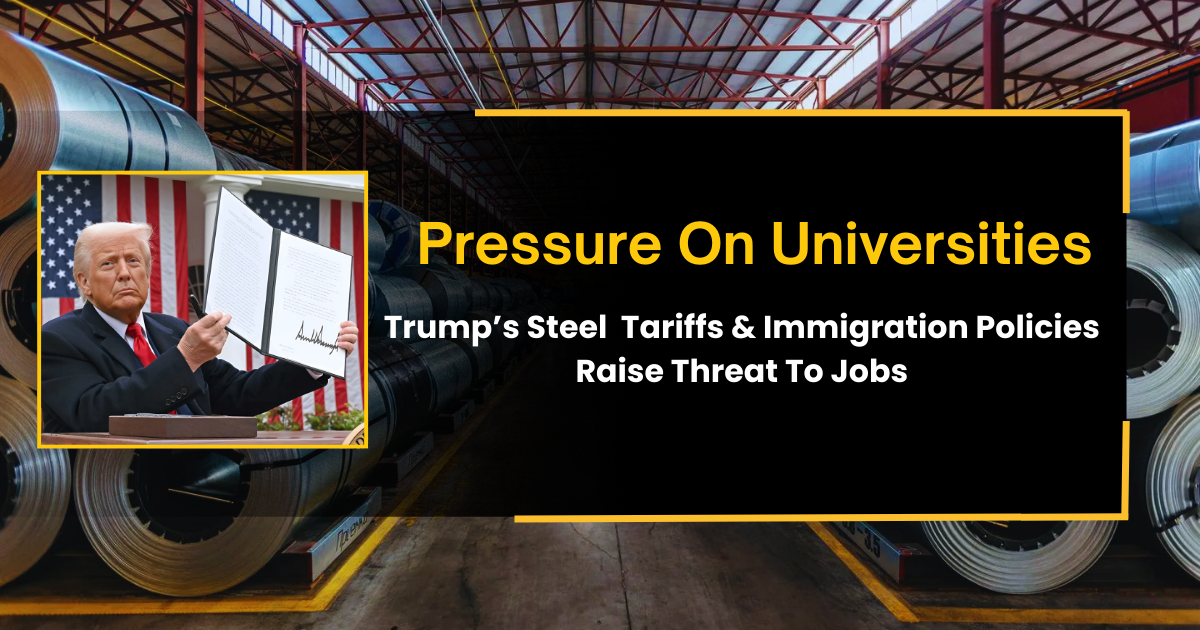India–US Trade Tensions Rise Over Steel and Auto Tariffs NMDC Limited reports a 38% drop in Q4 FY24 consolidated net profit RINL to Raise $23 Million Through Land Sales Amid Crisis

President Donald Trump’s recent move to raise steel and aluminum tariffs to 50% was celebrated as a win for American factory jobs. But while steel mills employ fewer than 85,000 workers, U.S. universities support over 3 million jobs nearly 35 times more. Experts warn the government’s focus on steel risks undermining higher education, one of the nation’s largest employment engines.
Studies show earlier tariffs cost far more jobs than they created, with nearly half a million lost elsewhere in the economy. Now, alongside tariffs, Trump’s restrictive immigration policies are adding pressure on universities. Proposed rules limiting international students to a four-year stay could hurt research and teaching, while discouraging global talent from coming to the U.S.
Economists argue that protecting politically symbolic industries like steel overlooks sectors with far greater impact. Scott Lincicome of the Cato Institute noted U.S. aluminum prices have risen nearly 50% compared to Europe and Japan, hurting manufacturers.
Higher education provides good salaries, fuels innovation, and sustains communities. Leaders fear that restrictive immigration, funding cuts, and policy uncertainty will erode the competitiveness of U.S. universities, risking hundreds of thousands of jobs.
Critics say the administration must decide: protect a small number of steel jobs or safeguard the far larger, knowledge-driven economy that universities represent.
Also Read : US warns of a possible reinstatement of tariffs on Mexican Steel, Aluminium US Releases Preliminary Results of Anti-Dumping Review on PC Strand Imports from Malaysia